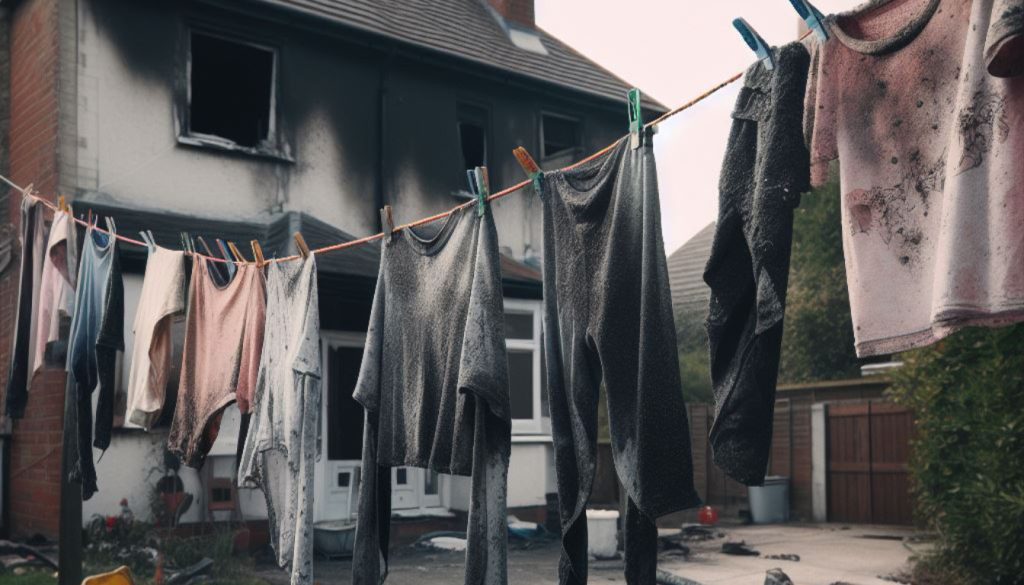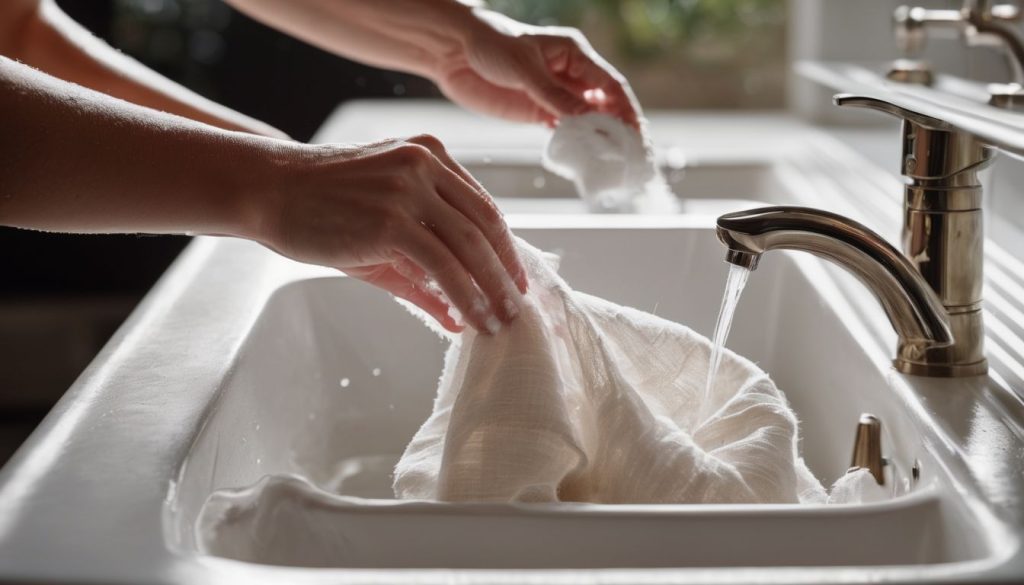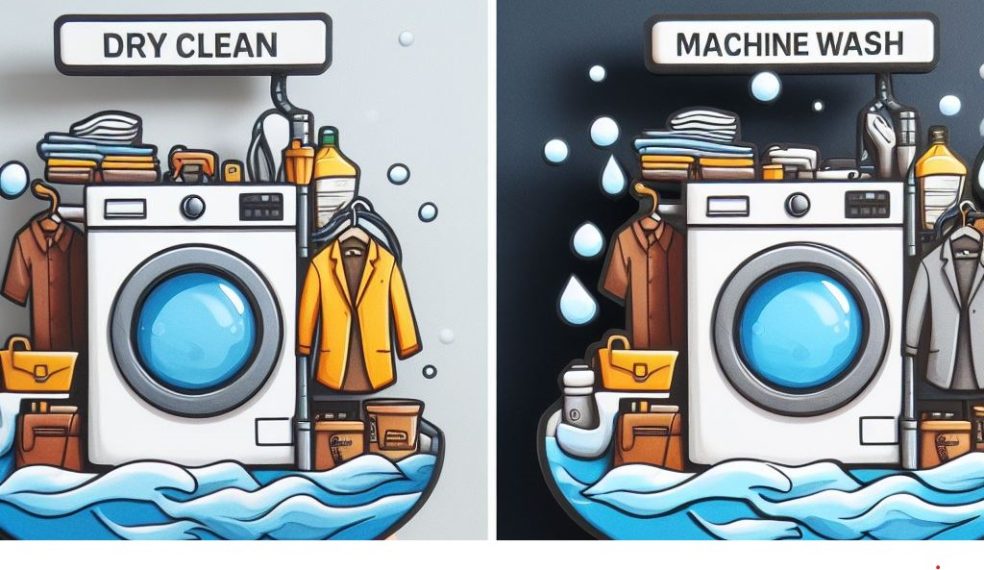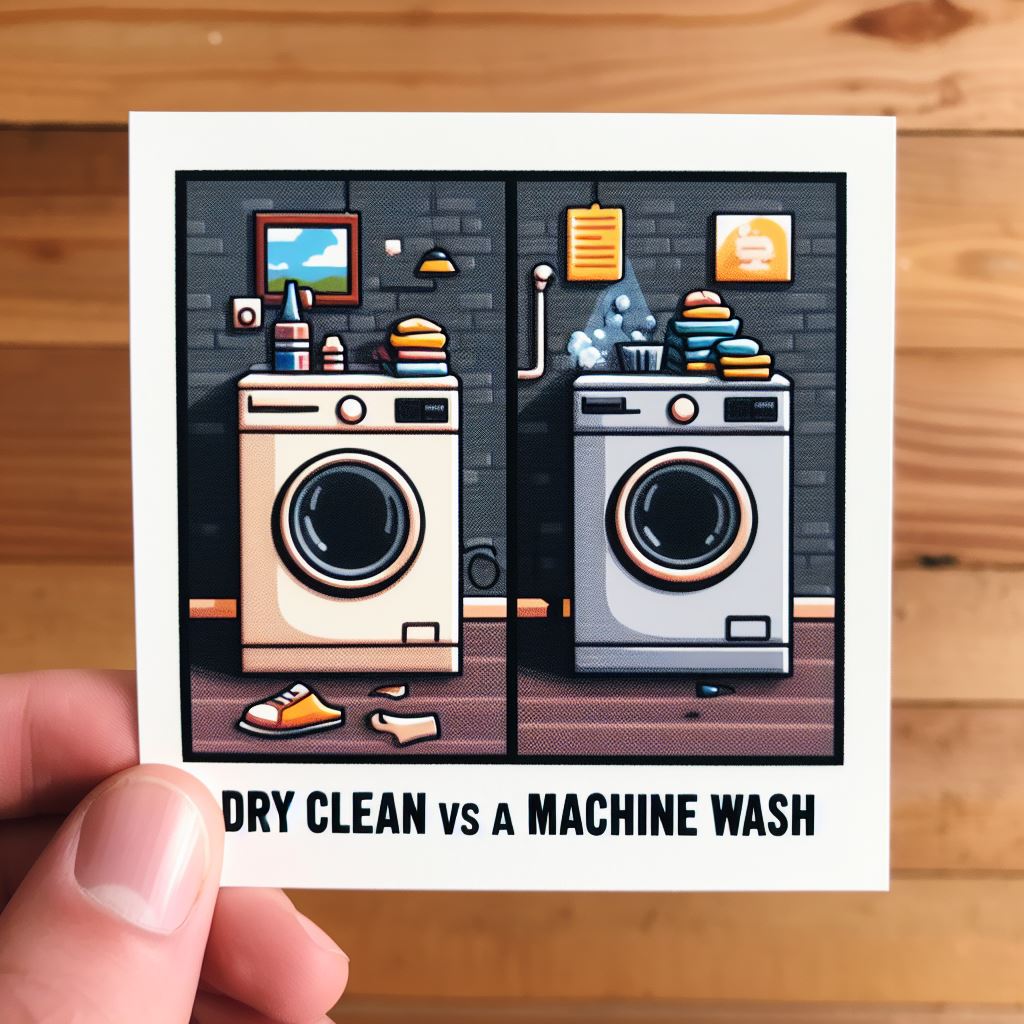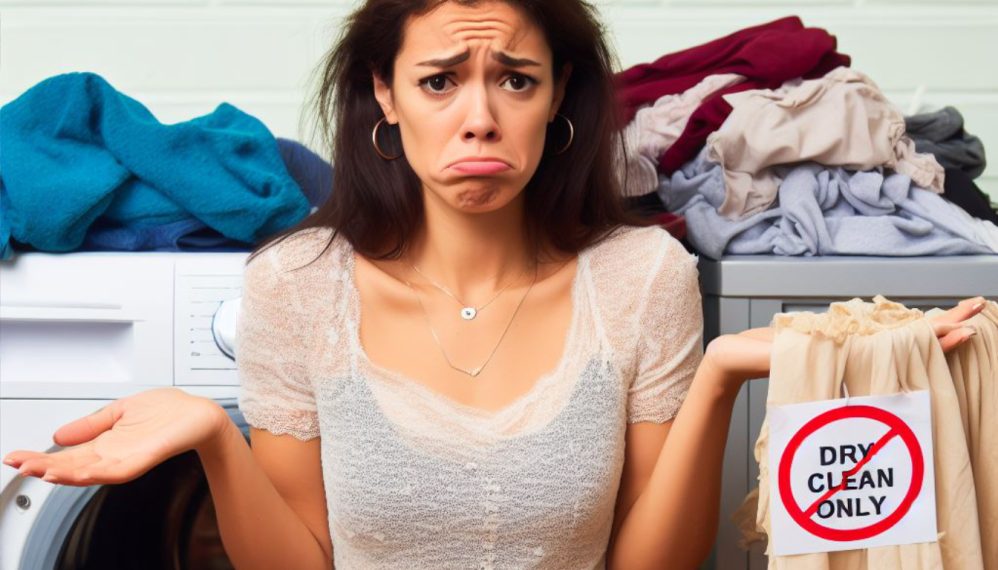
How To Dry Clean At Home Without A Kit: Effective Methods For Cleaning Your Clothes
Dry Cleaning , Fabricare Center Blog , Household
Do you have clothes that need dry cleaning, but the thought of going out and finding a professional cleaner seems daunting? Did you know that there are practical ways to dry clean your garments at home without using a special kit? This article will guide you through efficient methods for safely washing and reviving delicate items, from careful handwashing strategies to clever steam freshening tactics.
Get ready to explore how simple it can be to keep your wardrobe looking sharp while staying within your comfort zone.
Key Takeaways
- Certain clothes can be dry cleaned at home, including sweaters, mesh bags, mesh fabrics, silks, wool garments, and some special care fabrics. Always check the label and perform a patch test before attempting to clean.
- Fabrics like silk, lace, and wool should be sent to professional cleaners for optimal results due to their delicate nature and specialized handling requirements.
- Delicate items like silk, wool, lace clothing should be handwashed with gentle detergent and cool water. Avoid twisting or wringing the fabric to prevent damage.
- Leather and suede items can be cleaned at home using specific methods; however, it’s important to follow the necessary steps and use appropriate products for proper care.
At-Home Dry Cleaning vs Professional Dry Cleaning
Certain clothes can be dry cleaned at home, while others are best left to the professionals. It’s important to know which garments are suitable for DIY dry cleaning and when it’s better to send them to a professional cleaner for optimal results.
What clothes can be dry cleaned at home
Taking care of your garments at home requires knowing which items can handle the dry cleaning process and which ones cannot. Several types of clothes fall into the category that you can safely dry clean at home.
- Sweaters: Many sweaters are made from wool or synthetic blends, making them ideal candidates for home dry cleaning.
- Mesh bags: These items are often sturdy enough to withstand a careful handwash followed by air drying.
- Mesh fabrics: Like mesh bags, other mesh clothing items respond well to gentle home cleaning methods.
- Silks: With caution, certain silk pieces can be washed at home using a mild detergent and avoiding harsh wringing or twisting.
- Wool garments: If treated with care, these products may undergo a light hand wash and steaming instead of professional dry cleaning.
- Special care fabrics: Depending on the fabric type and if the label permits, some special care materials might tolerate home dry cleaning methods.
What clothes should be sent to a professional
Determining which clothes should be sent to a professional for dry cleaning instead of being cleaned at home is crucial in maintaining your wardrobe’s quality.
- Fabrics like silk, lace, and wool require special care and cannot be dry cleaned at home with soap or DIY methods.
- Certain “dry clean only” garments, as indicated on their labels, often need the expertise of a professional to retain their premium quality.
- Items that are heavily soiled or stained prove difficult to handle with standard spot treatment solutions and might benefit more from professional cleaning services.
- Any clothing made out of leather or suede demands specialist handling to avoid damaging their material during the cleaning process.
- If you possess valuable items or clothes that hold sentimental value, consider entrusting them to a professional. They are equipped with effective cleaning methods that ensure the longevity and preservation of these special pieces.
What Can and Cannot Be Dry Cleaned at Home
Certain fabrics, such as cotton, linen, polyester, and silk, can typically be dry cleaned at home with the proper equipment and materials. However, delicate items like lace or embellished garments should always be sent to a professional for cleaning.
Additionally, leather and suede should never be dry cleaned at home due to their unique care requirements. Finally, heavily soiled or stained items may also require professional attention for optimal results.
Dry cleanable fabrics
Certain fabrics handle the dry cleaning process better than others. Here’s a list:
- Wool stands among the most common dry cleanable fabrics. It can maintain its shape and appearance when handled correctly during dry cleaning.
- Cashmere, another popular choice for dry cleaning, retains softness and warmth without being damaged in the process.
- Silk, unlike wool and cashmere, may lose its sheen if not properly cared for. Using mild detergent and cool water works well.
- Rayon represents a unique case. While it is often considered a washable fabric, some types of rayon demand professional hand washing to avoid shrinking or losing color.
Delicate items
Taking care of delicate items requires special attention and care. Here are some important tips to consider when dry cleaning delicate clothes:
- Silk: Handwash silk garments using a gentle detergent and lukewarm water. Avoid twisting or wringing the fabric to prevent damage.
- Wool: Use a mild wool-specific detergent and cold water for handwashing wool items. Gently squeeze out excess moisture and reshape while damp.
- Lace: Handwash lace items in cool water with a mild detergent, carefully avoiding any rubbing or scrubbing that can cause tears.
- Beaded or sequined clothing: Spot clean small areas using a gentle spot treatment solution. To fully clean, handwash inside out in cold water, being careful not to snag or pull on the beads/sequins.
- Cashmere: Handwash cashmere sweaters with a gentle detergent in cold water. Avoid excessive agitation and squeezing while washing.
- Embroidered clothing: Turn embroidered garments inside out before handwashing in cool water with mild detergent. Gently squeeze out excess moisture without twisting or stretching the embroidery.
Leather and suede
Leather and suede items can be cleaned at home using hand-washing methods. For spot cleaning, delicate garments with small stains can also be treated at home. To remove wrinkles and freshen suede clothes, steaming is an effective method.
However, it’s important to note that only UGGs made of suede can be washed at home, while other suede clothing should be taken to a leather cleaner for proper care. It’s crucial to follow the necessary steps and use appropriate products when cleaning leather and suede items to maintain their quality and prevent damage.
Heavily soiled or stained items
Dry cleaning at home can effectively remove stains from heavily soiled items. Whether it’s deeply embedded dirt, stubborn stains, or tough grime, you can tackle these challenging discolorations without having to send your clothes to a professional cleaner.
Pre-treating the stains is an important first step in this process. By using a spot treatment solution and gently working it into the fabric, you can start breaking down those set-in stains and persistent dirt.
Then, with the help of a steam cleaner or an iron with steam function, you can lift away ground-in dirt and create crisp lines on your garments. At-home dry cleaning provides a cost-effective solution for managing heavily soiled or stained items without compromising on cleanliness and quality.
Necessary Equipment and Materials
To successfully dry clean your clothes at home, you’ll need a few essential items. Don’t worry; we’ve got you covered. Keep reading to find out what you’ll need and how to use them effectively.
Dry Cleaning Solvent
Dry cleaning solvent is a key component for at-home dry cleaning. These non-water-based solutions, such as chlorinated solvents like perchloroethylene (perc), are commonly used by professional dry cleaners in the U.S. They effectively remove dirt and stains from fabrics without the need for water, making them ideal for delicate or dry-cleanable items. Choosing the right dry cleaning solvent is crucial to ensure effective and safe cleaning of your clothes at home.
Spot Treatment Solution
To effectively remove stains from your clothes during the dry cleaning process, a spot treatment solution is essential. This solution is specifically formulated to target and break down stubborn stains, ensuring that your garments come out looking fresh and clean.
The spot treatment process involves applying a small amount of the solution directly onto the stained area before washing or handwashing. By gently rubbing the solution into the fabric, you can effectively lift and dissolve the stain, allowing for easier removal in subsequent steps. Just remember to check for any discoloration or changes in fabric appearance after spot treatment and drying to ensure optimal results.
In order to pre-treat stains before washing them, it’s recommended to create a paste using baking soda and water. This paste can be applied directly onto stubborn stains to help loosen them up before laundering.
Steam Cleaner
A steam cleaner is a necessary tool for at-home dry cleaning. It uses the power of heat and water to effectively clean clothes without the need for chemicals or harsh detergents. The high temperature of around 200 degrees helps to disinfect surfaces and kill bacteria, making it an ideal choice for refreshing and sanitizing your garments.
Whether you have stubborn wrinkles that need to be removed or simply want to freshen up your clothes between washes, a steam cleaner can be a convenient and effective solution.
Iron
Ironing is an essential step in the at-home dry cleaning process, helping to remove wrinkles and create crisp lines in your garments. To iron “dry clean only” clothes, you will need an iron, ironing board, a pressing cloth, and water in a spray bottle.
Simply set your iron to the appropriate temperature for the fabric and use the pressing cloth as a barrier between the garment and the hot iron. Gently glide the iron over the fabric to smooth out any wrinkles, taking care not to apply too much pressure or leave the iron on one spot for too long to avoid damaging delicate fabrics. Ironing can help give your clothes that fresh-from-the-dry-cleaner look without ever leaving your home.
Stain Remover
To effectively remove stains from your clothes at home, you will need a reliable stain remover. There are various options available such as chlorine bleach, color-safe bleach, color remover, and dry-cleaning fluid or petroleum-based pretreatment solvent. These stain removers work by breaking down and removing the stain particles from the fabric. You can apply them directly to the stained area before washing or follow the product instructions for best results. With the right stain remover in hand, you can easily tackle tough stains and keep your clothes looking fresh and clean.
Step-by-Step Guide: How to Dry Clean at Home Without a Kit
Pre-treating Stains, Handwashing, Steam Cleaning, and Removing Wrinkles – Learn how to effectively dry clean your clothes at home without a kit. Read on for the complete step-by-step guide!
Pre-treating Stains
To ensure the best results when dry cleaning your clothes at home, it’s important to pre-treat any visible stains before starting the process. This step can help lift and remove stubborn stains, making them easier to clean during the dry cleaning process.
One recommended stain remover for dry-clean garments is Amodex Ink, which is effective in removing various types of stains. To pre-treat a stain on a dry-clean only item, apply an All-Purpose solution and gently agitate the area with a soft brush or cloth.
Rinse the pre-treated stain to check if it has lifted before proceeding with the rest of the dry cleaning steps.
Handwashing
Handwashing clothes is an effective and gentle way to clean delicate garments. It can be a simple process, and there are step-by-step guides available to help you wash your clothes at home. However, it’s important to note that handwashing is not suitable for garments labeled as “dry clean only.”
When handwashing, use a mild detergent and gently agitate the clothes in a sink or basin filled with lukewarm water. Rinse thoroughly, removing all soap residue. Finally, carefully wring out excess water and hang the items up to dry. By following these steps, you can effectively clean your delicate fabrics without the need for a dry cleaning kit or professional service.
Steam Cleaning
Steam cleaning is a crucial step in the process of dry cleaning clothes at home without a kit. It helps remove stubborn stains and body oils that may not be easily tackled by other methods.
By using a steam cleaner on your garments, you can effectively eliminate deep-seated dirt and grime, leaving your clothes fresh and clean. Steam cleaning works by applying high-temperature steam to the fabric, which loosens and lifts away impurities.
This method is particularly useful for delicate items that cannot withstand rough handling or harsh chemicals. So when it comes to achieving professional-level results at home, don’t forget the power of steam cleaning.
Removing Wrinkles and Creating Crisp Lines
One effective method for removing wrinkles and creating crisp lines when dry cleaning at home is by using a clothes steamer or an iron. Steam cleaning with a handheld steamer can effectively remove wrinkles from clothes, making them look fresh and neat.
Another method is to brush the clothes with a soft-bristle brush or clothing brush, which helps to smooth out any creases and create sharp lines for a polished appearance. By utilizing these techniques, you can achieve professional-looking results without the need for a dry cleaning kit.
Tips for Dry Cleaning Clothes at Home
Read the label on your garments carefully to determine if they can be dry cleaned at home.
Read the Label
To effectively dry clean your clothes at home without a kit, it is crucial to carefully read the label on each garment. Clothing care instructions provide valuable information about the fabric and any specific cleaning methods that should be followed. Some items may require delicate handling or professional dry cleaning due to their sensitive nature, while others can be safely cleaned using gentle DIY methods. By understanding and following the guidelines on clothing labels, you can ensure proper cleaning techniques and maintain the quality of your garments for longer periods of time. Remember, reading the label is the first step towards successful at-home dry cleaning.
Test a Small Area First
Before attempting to clean your clothes at home, especially those that are labeled as “dry clean only,” it is crucial to test a small area first. This simple step can help you avoid any potential damage or discoloration of the garment caused by the cleaning solution. By spraying a small amount of an All-Purpose cleaner and wetting it on a small, inconspicuous area, you can assess if there will be any adverse reactions or harm. Wait for about 15 minutes after applying the cleaning solution before proceeding with cleaning the entire garment. Taking this precautionary measure ensures that your clothes stay safe during the cleaning process and helps maintain their quality and effectiveness.
Do Not Use Regular Detergent
Using regular detergent to clean your “dry clean only” clothes can lead to disastrous results. Regular detergents are not designed to effectively clean delicate fabrics and may cause damage, shrinking, or fading. This is because regular detergents do not provide the same cleaning and degreasing power as a dry cleaning solvent. It is crucial to use a detergent specifically made for delicates when washing your “dry clean only” clothes at home. By avoiding regular detergent, you can ensure that your clothes remain in great condition without any unwanted mishaps. Remember, always follow the care instructions on the label and treat your delicate items with extra care.
Store Items Properly
To keep your clothes in good condition after dry cleaning at home, it’s essential to store them properly. This helps prevent any damage or wrinkles and keeps them ready for future use. One way to store your cleaned items is by using Mylar bags specifically designed for clothing storage. These bags provide a protective barrier against dust, moisture, and pests, keeping your garments fresh and clean. Additionally, always inspect your clothes before storing them to address any holes or loose threads that may require mending. By storing your dry-cleaned items properly, you can prolong their lifespan and ensure they stay in great shape between wears.
Consider Professional Dry Cleaning for Complicated or Valuable Items
Professional dry cleaning is highly recommended for complicated or valuable items. Delicate fabrics, specialized cleaning techniques, and fragile materials require the expertise of experienced professionals to ensure they are properly cleaned without any damage. High-end garments with intricate designs, difficult stains, vintage clothing, expensive textiles, fine linens, and embellished items should all be entrusted to professional dry cleaners who have the knowledge and resources to handle them with care. By opting for professional dry cleaning for these types of items, you can rest assured that they will be treated with the utmost attention and expertise they deserve.
Conclusion
This article has provided valuable insights into how to effectively dry clean your clothes at home without a special kit. By understanding which garments can be safely cleaned at home and which should be entrusted to professional cleaners, you can maintain the quality of your wardrobe while staying within your comfort zone. The key takeaways emphasize the importance of reading garment labels, conducting patch tests, and using the right equipment and materials to achieve optimal results. Whether you’re dealing with delicate silks, woolens, or heavily soiled items, the step-by-step guide and essential tips offered here will empower you to keep your clothes looking fresh and clean, right in the convenience of your own home. So, get ready to revitalize your wardrobe and enjoy the benefits of at-home dry cleaning.
FAQs
1. Can I dry clean my clothes at home without a kit?
Yes, it’s possible to dry clean your clothes at home without a kit using alternative methods that can help remove stains and freshen your garments.
2. What are some effective methods for dry cleaning clothes at home?
Some effective methods for dry cleaning clothes at home include using vinegar and water solution, steam-cleaning with a garment steamer, or spot-treating stains with specialized cleaners.
3. How do I use vinegar to dry clean my clothes at home?
To use vinegar for DIY dry cleaning, mix equal parts of white vinegar and water in a spray bottle, then gently mist the garment’s problem areas before brushing or blotting away any residue.
4. Can I steam-clean my clothes without a garment steamer?
Yes, you can steam-clean your clothes without a garment steamer by hanging them in the bathroom while taking a hot shower or by using an iron with the steam function on low heat.
5. Are there any risks involved in attempting to dry clean clothes at home?
While it is generally safe to try DIY dry cleaning methods, it’s important to read clothing labels and test any products on inconspicuous areas first to avoid potential damage or color bleeding.






